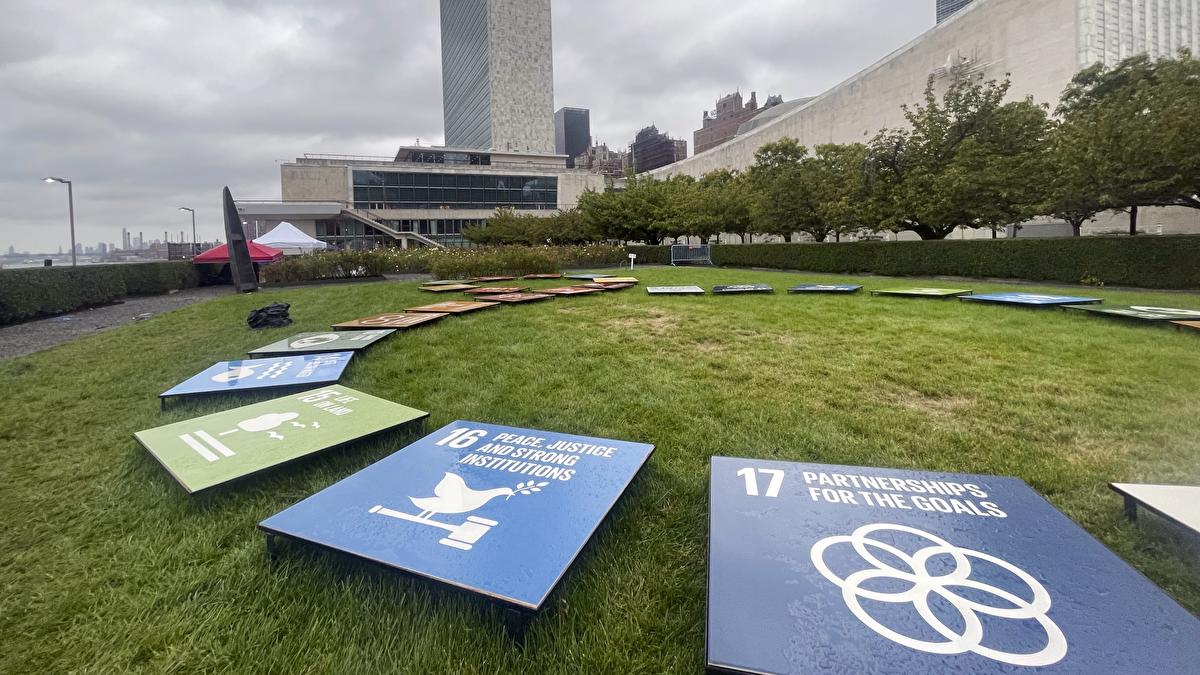UN report says more efforts needed for region to meet sustainable development goals

The Asia-Pacific region remains significantly off track in its sustainable development goals (SDGs), with most advancing too slowly or stagnating despite ongoing efforts to implement the 2030 Agenda for Sustainable Development, a UN agency report warned.
Published by the United Nations Economic and Social Commission for Asia and the Pacific (ESCAP) on Feb 18, the Asia-Pacific SDG Progress Report 2025 showed notable advancements in some areas, while progress in others has been slow or has even regressed.
Among the 117 SDGs with sufficient data, only 16 are on track to be achieved by 2030, while 18 show a negative trend demanding urgent reversal.
ALSO READ: HK can help ASEAN make green transition, forum hears
The majority of those 18 goals relate to climate-related challenges and disaster risk.
The report noted progress toward several goals is far too slow, particularly those on responsible consumption and production, quality education, and decent work and economic growth.
In addition, the detailed examination of the region indicated that negative trends in environmental indicators — such as the economic benefits from sustainable fisheries and the extent of land degradation — hinder progress on life underwater and on land.
“Lack of progress toward environmental sustainability is a key obstacle for regional progress toward the 2030 targets,” said Rachael Beaven, director of ESCAP’s statistics division.
“Key drivers of this stagnation include increases in fossil fuel subsidies, poor proficiency in reading and mathematics, and unsustainable production patterns,” she added.
“The least developed countries, landlocked developing countries, and Small Island Developing States in the Asia-Pacific region require special attention to achieve the goals and may benefit from future action or other shared priority areas, such as climate action,” Beaven noted.
READ MORE: The Asia-Pacific region needs cooperation with a focus on unity, peace and development
Meanwhile, the report showed significant achievements in the Asia-Pacific region in terms of industry, innovation and infrastructure, and good health and well-being, driven by expanded access to mobile networks and remarkable improvements in maternal, infant, and child health.
Furthermore, it noted progress on the poverty eradication goal as a result of reducing income poverty, and progress on the zero hunger goal was marked by substantial strides in combating malnutrition.
“The progress on industry, innovation and infrastructure, and good health and well-being demonstrated that targeted investments and effective policies can yield significant gains,” said Beaven.
She emphasized that the five sub-regions of the Asia-Pacific are experiencing unique trajectories in sustainable development.
The diversity in progress underscores the need for targeted strategies and region-specific solutions to ensure no one is left behind, she said.
READ MORE: Climate change stalling progress on SDGs, report says
Despite these strides, the report showed that insufficient data in the region presents a major obstacle to understanding progress in critical areas.
These include gender equality and peace, justice, and strong institutions — both essential to realizing the 2030 Agenda’s commitment to leaving no one behind.
Data availability across the region shows a slow yet positive trend, with an average of 54 percent of indicators having at least two data points in 2024, a small increase from 2023.
Notably, the region outpaces the rest of the world by 6 percent. However, substantial data gaps remain across key disaggregation dimensions, including age, migratory status, disability, gender, and urban and rural locations.
“Data gaps persist and leave some of the most vulnerable populations invisible in official statistics, limiting policymakers’ ability to address their needs effectively,” said UN Under-Secretary-General and ESCAP Executive Secretary Armida Salsiah Alisjahbana.
She said a lack of resources to modernize statistical systems poses additional hurdles. “Without urgent action to accelerate progress, many of the goals will remain out of reach,” she said.
ESCAP’s Deputy Executive Secretary for Program Lin Yang said that partnerships between governments, development partners, and local communities in the Asia-Pacific region have deployed innovative approaches to fill information gaps and improve SDG monitoring.
“These initiatives have amplified the voices of vulnerable and diverse groups in decision-making processes and given them a role in generating data so that policymakers are better able to respond to their needs,” she said.
ALSO READ: APAC needs to treat new UN digital framework seriously
To fully understand and address the challenges facing groups in vulnerable situations, Yang emphasized that transforming national statistical systems to meet the data needs of the 2030 Agenda requires urgent political commitment, financial investment, and stronger cross-sector partnerships.
“Governments in the Asia-Pacific region can lead this transformation by adopting a whole-of-society approach and investing in the digital transformation of their statistical systems,” Yang added.
“Achieving the SDGs for everyone and everywhere requires a transformative shift in statistical systems. This includes fostering strong political leadership, mobilizing investments, and strengthening partnerships.”
Contact the writer at yangwanli@chinadaily.com.cn


